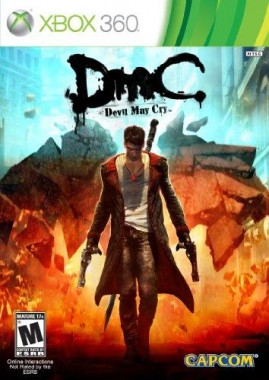
DmC: Devil May Cry
Developer: Ninja Theory
Publisher: Capcom
Platform: Xbox 360 (Reviewed), Playstation 3, PC
Release Date: January 15, 2012
Price: $59.99 – BUY NOW
Overview
Over two years ago, Ninja Theory and Capcom came together and announced DmC as a full reboot for the Devil May Cry franchise, causing the entire fanbase to erupt in anger. Dante sported a much shorter haircut, donning short, black locks – and his attitude reeked of a new found arrogance that this group just couldn’t get past. Since then, this one title has triggered numerous debates and controversy, adding in more ammunition for the distrusting public to use against Capcom.
Judgement day has finally come. Dante is back, and like it or not – DmC is the best Devil May Cry to date. That is a bold statement to start off a review – but hear me out. Changing a character doesn’t hurt a franchise when it is done right, and that is exactly what Ninja Theory achieved with this new and improved version of the much loved IP. Go ahead. Lay those pitchforks and torches down, as we present to you our review of DmC: Devil May Cry.
Story
When I first seen the original footage of DmC, I was a little put off like the rest of the world. I mean, the only Dante I ever knew sported white hair and seemed to carry himself with such confidence and style that it was hard not to want to be in his shoes. Yeah, I think the hair color is a big reason for the whole backlash against Capcom to start with, but a good part of it is surely the fact that the new Dante is much harder to place ourselves into – or relate with as a character. This Dante is quick tongued, gets any woman in bed that he wants, and starts off as about as arrogant (and borderline trashy) as they come. In fact, if I were just to be reviewing the first chapter of the game, I certainly wouldn’t have such a high regard for this reboot’s transformation of Dante.
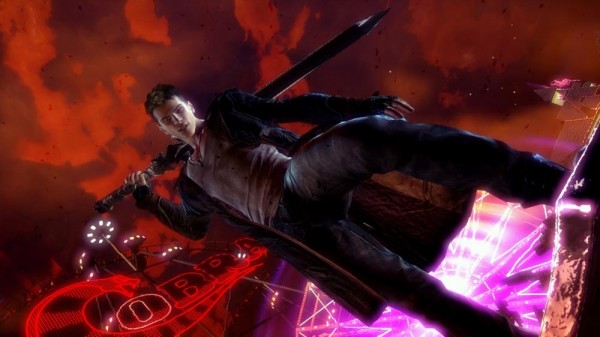
DmC: Devil May Cry is brilliant in that aspect however, as the player is more than likely going to burst out a few sighs as they begin with this new Dante, as the constant cursing, puns, and over sexualization used make it seem that our new hero is targeted to a different market entirely this time around. As you continue making your way though the plot, Dante begins to learn more about his forgotten past, and we – as the players, get to see this lost soul transform into a true hero. Yeah – some are going to think he is still a bit much to take in – even later on, but my own time with this newer version of the protagonist made me feel as if DmC introduced me to the character all over again, peeling away layer after layer as the narrative grew thicker over time. You want to see true character growth? DmC does just that and more, and without this revamp – I don’t think I would have enjoyed the story nearly as much as I did.
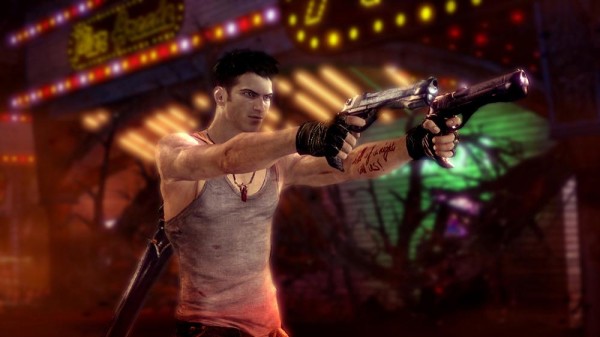
Speaking of the general plotline, DmC starts out with a young, immature Dante being placed in the role of saving the world from an overlord by the name on Mungus. After forming an alliance with his own brother who runs a resistance by the name of “The Order” and a clever female sidekick, the player then straps themselves into a script that tackles hot topics such as politics, money, and human slavery as they proceed to rid the world of every demon in sight. Every aspect of the plot blends perfectly with Dante’s own backstory, and the abundance of humor keeps the experience from faltering – as many of those little jokes I mentioned are genuinely amusing and do nothing but enhance the vividly portrayed characters the player will encounter. It both a visual and narrative sense, this plot lacks a lot of the darkness of the old Devil May Cry titles, but does more than enough to stand strong on it’s own merits to capture a brand new generation of fans.
Gameplay
Everytime I have played an action game since January of 2010, I usually enjoy myself, but one title overshadows the experience. Whether it be the brilliant Enslaved: Odyssey to the West or the beautiful El Shaddai, I never quite found a game in the genre that shook me like Bayonetta. Bayonetta was so quick and full of strategical depth that I have found myself repeating the story time and time again just to get that rush. You may be asking yourself, “This is a review for DmC, why does that matter?”. Well, for the first time in three years, I feel Bayonetta now has an equal.
In many ways, DmC sticks to the same core formula that the Devil May Cry franchise laid years ago, with Dante partaking in missions, upgrading equipment, and performing combo after combo on every demon that crosses his path. As a full package, DmC however is not that Devil May Cry. This reboot sacrifices some of the depth to streamline the main game, enhancing the speed of the action while ditching a lot of the main exploration elements of the past. Now, don’t get me wrong – DmC isn’t exactly linear, but Dante’s path is a bit locked in from the start, with most of the chaos coming to him rather than lying in wait for a run of the mill encounter.
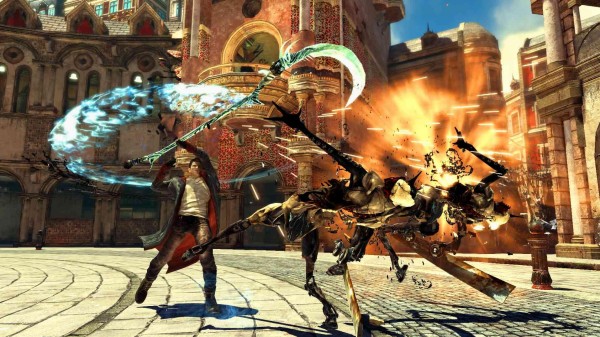
You can’t really even begin to describe the combat within DmC without first speaking about the combo system in place. Much like the classics, Dante is ranked on “Style”, where he is graded on his performance with a letter rank. This means the player controls their own score, and always has the option to just go in and hack and slash demons to bits – or take the game to the next level with multiple techniques that can be chained into combos. Combat has never been more accessible in a Devil May Cry game either, as every technique available have been mapped out accordingly, with the choice to sharpen up on your own skills in a practice mode found at many different points within the game. Using the Y button will let Dante use his sword, X brings out Ebony and Ivory (his handy dual wielding pistols), and both triggers let our black-haired leader pull off some insane maneuvers with the Demon and Angel weaponry.
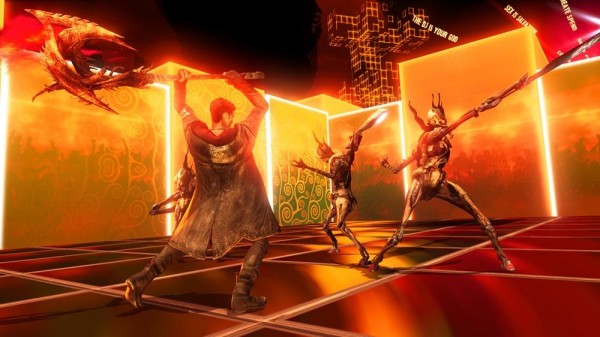
There are eight different weapons in the game, each featuring a decent sized list of upgradable techniques. This arsenal is obtained over time, and thankfully is scattered throughout the entire game to keep the player hunting for a new way to kill enemies while providing the core combat with a dose of freshness as you progress onward. As enemies are defeated, the player will earn skill points, which can then be traded for new techniques to use with whatever weapon you desire to upgrade. Every weapon has a full list of these upgrades, and using them in battle is part of what makes DmC’s combat mechanics so great. You see, DmC allows the player to chain together combos at a moment’s notice. Dante normally holds four different weapons at once, and those can all be used together to decimate a for and increase your own style ranking as you fight. For instance, the player can start out with some slashing with the sword, keep the combo going on another enemy in the air immediately afterwards with Ebony and Ivory, and then whip out a demonic blade to handle a much tougher opponent. It sounds chaotic to have that much action and weapon swapping happen at once, but this title pulls it all off effortlessly with some brilliant controller mapping to match it’s own fast pace, leaving the player to only worry about the action on screen.
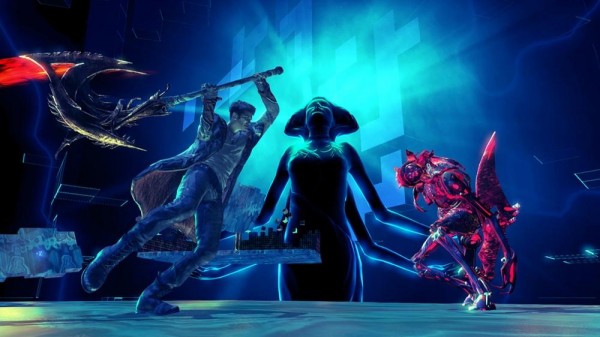
Sound good? Well, it gets even better as you go. Later on, Dante can acquire extra weapons for the trigger buttons as well as some new guns, which can all be switched out instantly by tapping the appropriate command on the D-Pad. This is where the game’s own combat takes a more clever turn. Imagine yourself, surrounded by enemies. Some of these demons can only be killed by a specific weapon. The Aquila (a newly introduced angelic weapon that handle like twin chakrams of shorts) can be tossed at the plain enemies to keep them preoccupied while you make work of other foes, meaning Dante continues his own combo while fighting more than one enemy at a time. The Aquila just happen to be one of these secondary demonic/angelic weapons as well, meaning once you feel ready for a change, a simple tap of a direction will let you return to your standard blade for that input. That may be a rather long example to use, but it’s just one of the hundreds of combinations Dante can use at any time. It only takes minutes for all of these combined efforts to feel second nature, and trying out each new ability keeps the game fun and fresh until those credits roll.
One part of DmC that is going to rely on personal preference of the player is the mission layout. There are twenty stages in all, with each quarter mark usually followed by a boss battle. The stages in-between are usually made up of finding an item, protecting an ally, or just killing every demon in one particular area. Yes, the combo system keeps the game fresh, but the numbered stages are a bit predictable – meaning you will probably know when a major event is about to take place based on the number of mission you are playing on at the time. I personally didn’t mind this at all and think that far too many titles that try to surprise the player with mediocre results that cripple their product’s own pacing, but I can see why some would want more of an element of surprise to their own exploration – and that is just something DmC lacks.
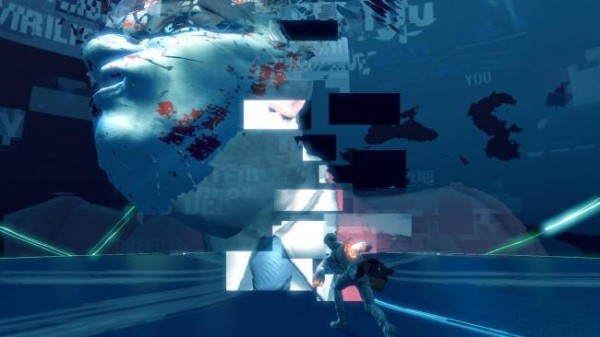
Enemies on the other hand are quite varied and new breeds are introduced in nearly every stage to keep Dante on his toes. These demons range from aerial foes, grounded powerhouses, and your standard baddie, but as I mentioned earlier, usually come with a required combat strategy to defeat. Boss battles are not very common in DmC, but when they occur – you will know it. Every boss encounter has a huge build-up, and each one feels as just as epic as the next. Now, these battles are not exactly mind-numbingly difficult, as once you find that weak spot, it’s not hard to make quick work out of your target. The presentation and sheer style enforced however are just oozing with charm and unforgettable, making progression an easy task. I still had a lot of fun with the standard combat, but once I tasted the delicious reward of such an event, I sped through the game at a non-stop pace – just to see what else DmC had in store.
Like nearly every other action title in existence, DmC requires a good amount of platforming. Dante is quick and agile, and will be required to pounce up to different platforms in almost every mission. Thankfully, the platforming bits are handled quite well, and are only enhanced by the way Ninja Theory incorporated weapons into the mix. Dante can use his Angel weapon as a grappling hook to swing from specific points in the stage, or use the Demonic slot to through a chain and pull a platform closer. These sections can be just as fast-paced as the combat, meaning that it will require the player to react on their toes and sometimes even combine these techniques to progress in a stage. The reward for all of your work is simply seeing it all in action, as these platforming tools make Dante flow through a world at an instant and are responsible for some of the most intense chase sequences an action game has seen to date.
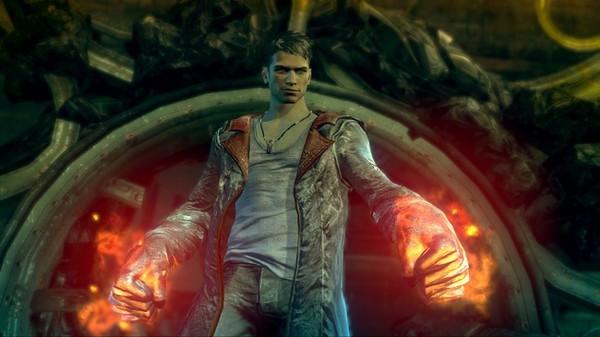
Once the journey is complete, it’s really just beginning. Most of you who have played an older Devil May Cry title know what I am talking about here, as there are tons of secrets and collectibles to be found, making DmC a completionists dream come true. The ranking system and leaderboards also enhance the replay value, allowing the player to achieve higher ranks in style, time, and overall completion as the revisit past missions. DmC is definitely a cake walk compared to Devil May Cry 3 on Normal, but those who are after a challenge are also in luck as there are several bonus difficulties that can be unlocked post-game, with a few skins and extra goodies added in to sweeten this package as a whole.
Visuals and Audio
I’m not going to defend Dante’s new model, as there is simply nothing wrong with it. Instead, we all should pay attention to the beautiful world DmC has within it’s well rounded walls. Each area feels different from the next, featuring grimacing zones that feel as if they were ripped from hell – or more poppy locales to do battle in such as a fully featured nightclub that never seems to stop delivering. There are also some really nice aesthetics on display as well, which are used to show off the timid tones of red, orange, and white that are featured so prominently during the main campaign, as well as the off the wall art design that shows up during the more gimmicky one-off stages the player will encounter. DmC isn’t really the game that you stop and take in the atmosphere, but it’s nice to see so much work went into making it feel like it’s own product.
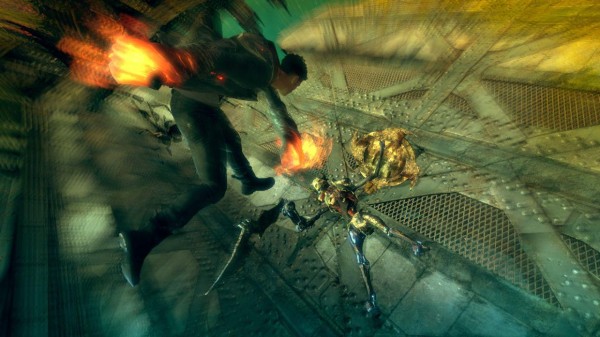
The audio may be the closest thing to the older Devil May Cry franchise within DmC. Whenever enemies grow near, a hard rock track kicks up – transforming Dante from explorer to an ass-kicking machine. Some of these punk-rock fueled screamers may not be for everyone, but they do set the stage for some intense action – and that is what DmC is all about. A lot can be said about DmC’s voice acting as well. Each performance has been handled wonderfully, allowing the player to instantly connect with this motley cast of characters as they recite their well-acted lines. Dante’s own actor will be the main voice you hear, and is able to deliver his sarcastic one-liners with a sense of confidence – and not once did I feel annoyed by even the cheesiest jokes that sputtered out of his mouth (and trust me, there are quite a few).
Overall
I went into DmC: Devil May Cry with a bit of doubt, but I am now a full believer. Ninja Theory could have scrapped this project altogether when the harsh reaction came full circle a couple of years ago, but they stuck with it, and are now responsible for one of the finest action titles of this generation. DmC is a fast-paced roller coaster with very little slowdown, fueled by it’s thrilling combat and highly enjoyable plot. Dante may not be the white-haired, suave character we remember him as, but after experiencing his change in this new installment, everything will make sense once those credits roll and the player will be hungering for more of the lore, humor, and action this franchise has to offer. DmC isn’t just a reboot, it’s a rebirth. For those on the fence – It’s time to drop past doubts and take the plunge into one unforgettable experience, with a new Nephilim leading the way into a realm of pure angelic bliss.


